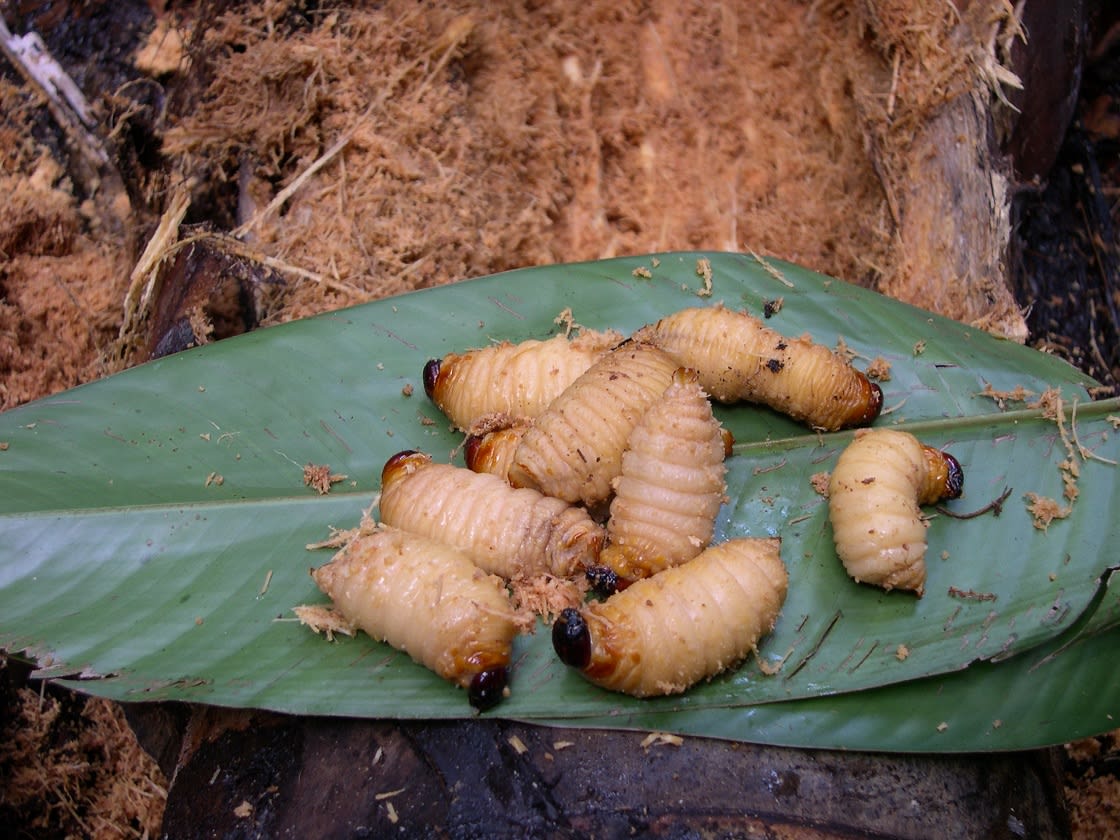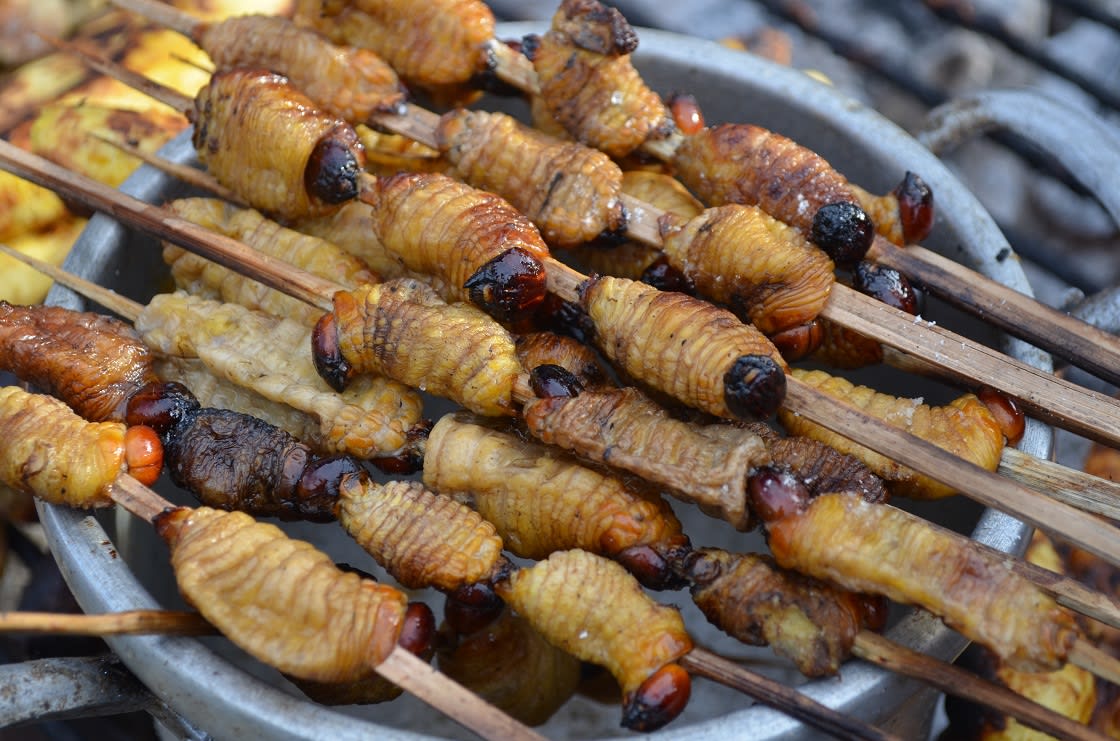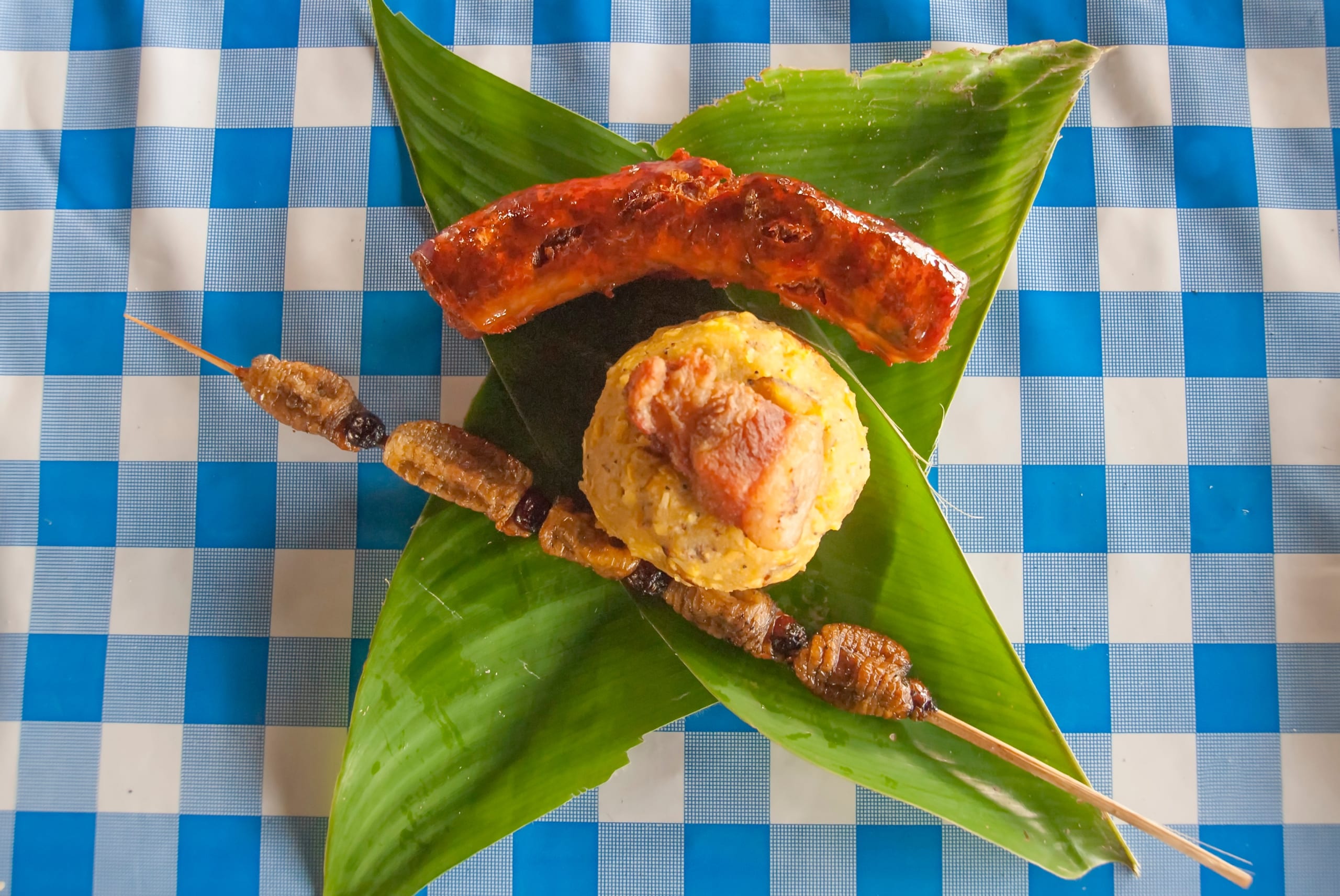
The rich Amazon region is chock full of many weird and wonderful gastronomic delicacies, but perhaps none is more bizarre than Suri, a type of worm that’s a highly popular, specialty in Peru, long upheld by native populations for its delicious and nutritious properties. If you fancy sampling succulent suri during your time in the Amazon, here’s everything you need to know about this intriguing local delicacy.

Suri, one of the most exotic dishes of the Amazon Jungle In Peru
These Amazonian grubs are the larvae of the palm weevil, known as a cocotero in Peru or a larva de palma in Spanish. They are commonly found residing in the aguaje tree, a plant that is extremely widespread throughout the Amazon, to such an extent that it’s a commonly recognized emblem of the entire region. The ubiquity of the aguaje palm explains in turn the prevalence of suri, as the tree serves as their principal habitat and source of food.
The cocotero bore deep holes into the trunks of the aguaje, where it subsequently lays its eggs. This then hatches as the suri grub, which nourish themselves on the tree’s rich palm bark. This explains the fatty, greasy nature of suri, as well as their slightly sweet taste. The grub has a pearly white curved body, with a black head and two claw-like teeth. If the suri are not harvested, they evolve into a cocotero, setting the entire cycle into motion once more. Suri are the largest edible insects in the Peruvian Amazon, reaching approximately 8-10 cm x 2cm.
So now you know how to spot them, where they come from, and where they can be found. But you may still be left wondering why you’d want to eat them.
Suri is an undeniably popular delicacy in the Peruvian Amazon, where they’ve long been consumed and upheld by indigenous populations as an important, not to mention delicious, source of sustenance. It’s estimated that the native population consumes on average 2 kilos of suri per year (1 suri = approx. 10 grams). Wandering through the markets in places like Iquitos you’ll quickly start spotting numerous stalls stacked full of crispy suri skewers. This aspect of Amazonian cuisine serves as a popular tourist attraction, with many visitors eager to sample the gourmet grubs for themselves.

It measures between five and seven centimeters long
Firstly, they can be highly tasty. Many people, locals and tourists alike, praise suri for their succulence, subtle sweetness, soft mushy texture (or crispy when cooked), and delicate flavor. They’ve been compared to the flavor of fresh hazelnut, the texture of mayonnaise, and even to the taste of “Cheetos”. If you’re brave enough to look beyond the appearance and break any familiarity issues, you could be in for a pleasant surprise. There’s only one way to find out for sure, which is to take a bite!
Another huge advantage of suri is its nutritional and medicinal properties. Whilst they certainly aren’t the most visually appetizing of foods, they pack a real punch in terms of health benefits. They are very rich in protein (at about 62%), as well as being packed with fat, but of the healthy unsaturated kind. They are also a great source of thiamine, zinc, copper, iron, niacin, riboflavin, and beta carotene. What’s more, suri are recognized as a medicinal substance by some, with potential curative properties for ailments such as bronchial infections in children.
Finally, suri have been upheld as a beneficial food source on a much wider scale, with some experts suggesting they could even play a role in alleviating world hunger. Insect-eating (known as entomophagy) in general is considered by some an overlooked aspect of the human diet that has many positives. Insects, and grubs, in particular, are nutritionally filling, quick, easy and cheap to breed and purchase, and they could also help alleviate deforestation and habitat loss. There is even talk of plans to develop renewable sericulture in the Amazon as a way to tap into some of these benefits.

Grilled Suri Worms With Garnish And Chorizo
Many locals prefer their suri raw, even alive. If you’re brave enough to try them raw, perhaps on a jungle trek, here’s how to go about it. First, use your thumb and forefinger to remove the brown head and pincers and then a fingernail to slice through the skin of the body. Then open up the suri lengthwise to remove the small intestinal tract and finish by sucking out the white gelatinous contents.
If this sounds like a little too much, there are many ways to prepare cooked suri and complement it with a host of great flavors. The most popular way of preparing suri is anticucho-style where they are assembled on skewers, marinated, and grilled over hot coals for just a few minutes. When cooked in this way the outside becomes crispy, similar to the skin of sausage or chorizo. However, when you bite into the suri the texture is creamy and fatty, providing an interesting contrast. Suri-on-a-stick can be found in markets throughout the Amazon region and makes a convenient and cheap snack.
For something a little fancier, we recommend trying chicharron de suri. Due to their greasy content, suri can be fried in their own fat, in a similar way to bacon. But in this recipe, they are deep-fried in vegetable oil for an even crisper and tastier result. Seasoned with salt, herbs, and wild garlic and served with boiled green plantains, this dish is widely regarded as a delicious treat by many locals.
Have you been inspired to give this popular local delicacy a try? If you’re interested in learning more about the diversity of Amazonian cuisine, check out our Amazon cruises in Peru that take you directly to the markets themselves!
While Rainforest Cruises aim to provide accurate and up-to-date information, we make no representations as to the accuracy or completeness of any information herein or found by following any link on this site. Rainforest Cruises cannot and will not accept responsibility for any omissions or inaccuracies, or for any consequences arising therefrom, including any losses, injuries, or damages resulting from the display or use of this information.




